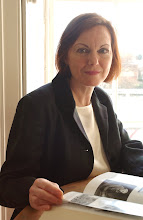
 Mark Bourne’s account of his great, great grandfather’s experience at UCL under the tutorship of the eminent zoologist, Ray Lankester (1847-1929, top picture), fired my curiousity to know what became of Alfred Gibbs Bourne. As with many of Lankester’s students, he did rather well.
Mark Bourne’s account of his great, great grandfather’s experience at UCL under the tutorship of the eminent zoologist, Ray Lankester (1847-1929, top picture), fired my curiousity to know what became of Alfred Gibbs Bourne. As with many of Lankester’s students, he did rather well.Mark writes: ‘Alfred Gibbs went to Madras in 1886 to join the Presidency College and became Professor of Biology. He was made a Fellow of the Royal Society in 1895. In 1903 he was appointed Director of Public Instruction and worked on changes in the secondary education system, introducing the Secondary School Leaving Certificate System. After his retirement, he took charge as director of the Indian Institute of Science. He held this position from 1915 to 1921. He was knighted Knight Commander of the Order of the Indian Empire in 1913.’
Alfred had been in India for less than a year when he received a letter from Lankester, obviously in response to the draft of a paper that he had asked his old tutor to read:
Letter from E. R. Lankester to A. G. Bourne, 18th January 1887
‘I am now going to pitch into you. I think your paper on Earthworms very bad. It is the old complaint I have to make which I have made to you and dozens of younger men – viz. you will not take the trouble to say what you mean – in fact are infernally lazy. Even your reference to “Q.J.M.S.” shows damnable shirking. It ought to be “Quart. Journ. Micros. Sci.” You coolly assume that everyone knows all about the thing before you begin to write. In consequence your paper is most uninteresting. You never explain what the Perichaetes are or in what points they are known to vary – or what remarkable anatomical characters they exhibit. You don’t describe any of your species fully and you give no drawings. You coolly say often at great length with an air of solemnity and importance “The presence of so and so was not determined” which really ought to be written “I am so lazy and careless that I did not trouble to ascertain this important fact – and I won’t even now take the trouble to do it – but prefer to write without doing so”. The whole style of that kind of work is damnable. You have heaps of these worms & have no excuse for sending home slovenly work. ...’
One hopes that Alfred, having spent some years as Lankester’s student and also as his laboratory assistant, was not overly perturbed by this attack on his scholarship. Mark suggests that Lankester, in fact, held his old student in high regard: ‘His letters of recommendation of Alfred to other institutions and publishers (including that very the same paper!) were always very complimentary. I think it was he also who was a proposer for Alfred's membership to the Royal Society.’ And the respect was mutual: ‘Alfred certainly seemed to have a lot of respect for him even when Ray seems to be travelling off to Europe, leaving Alfred (somewhat in the lurch) to deal with a lot of the responsibility for teaching the students.’
Mark also attached a photograph (above) of Alfred’s wife, Emily Tree Glashier (later Lady Bourne). She was an acclaimed botanical artist and teamed up with other artists at Kodaikanal to produce illustrations of the local flora. Many of Alfred's scientific articles were also illustrated by her. For readers interested in 19th century earthworms, here's a link to an original illustrated article by Alfred Gibbs Bourne.






















